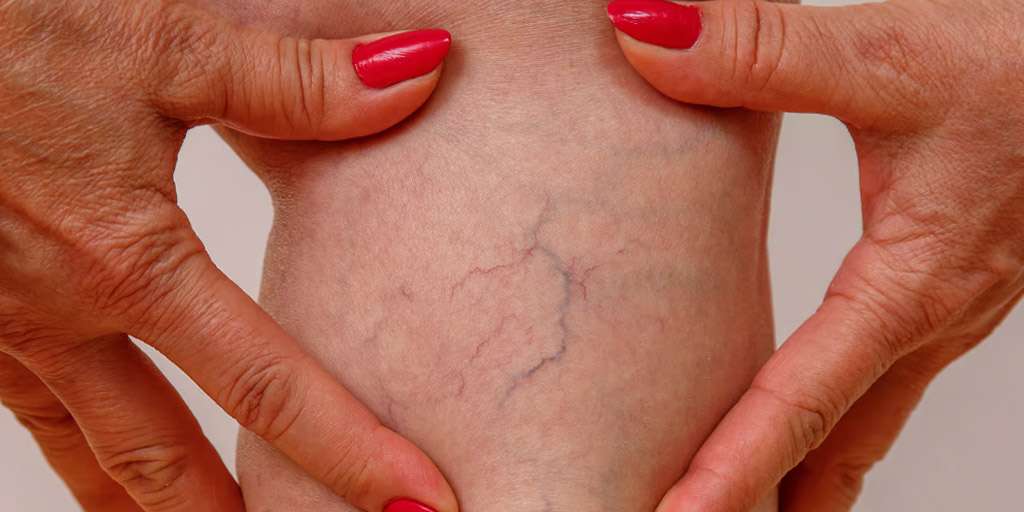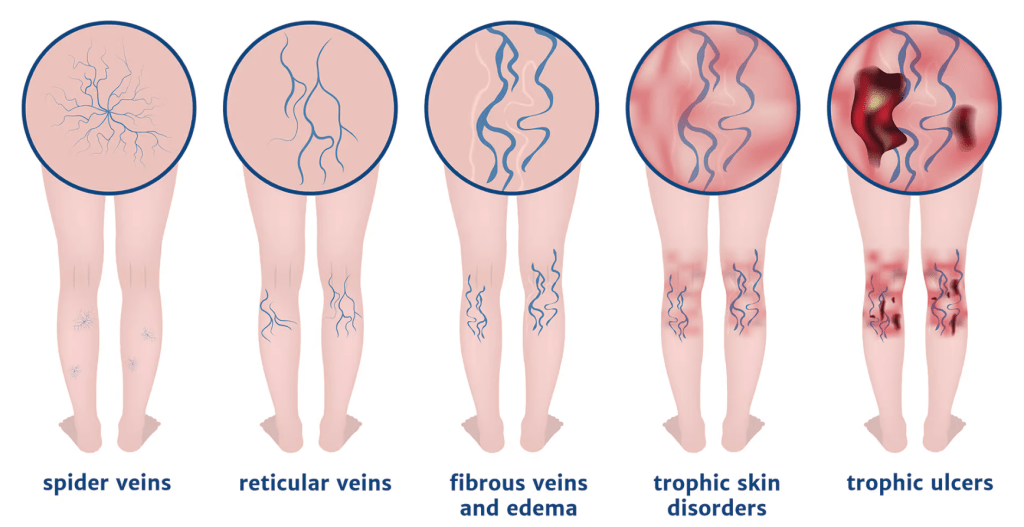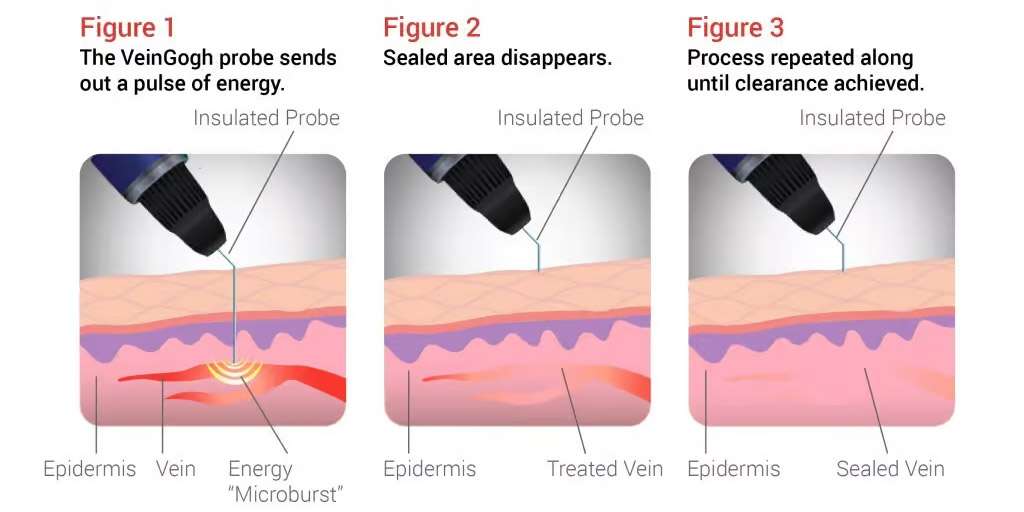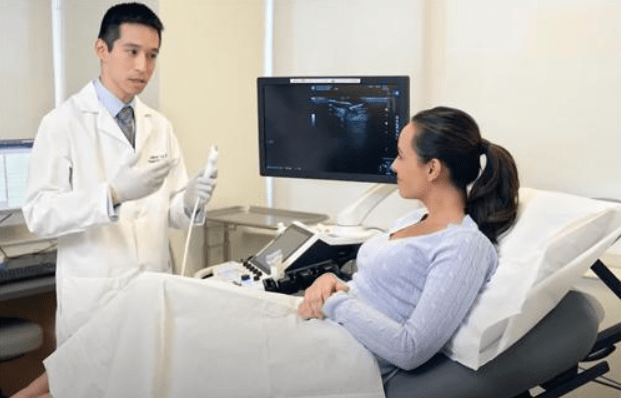
Understanding Vein Color and Health Concerns
At Fox Valley Surgical Specialists, we frequently hear the question: “Why are my veins blue?” This is a common question that often leads patients to seek our expertise in vein diagnosis and treatment.
Understanding the reasons behind the color of your veins can help demystify their appearance and guide you in maintaining good vascular health.
The Science Behind Blue Veins
Despite the fact that blood is red, veins often appear blue or even green when viewed through the skin. This is not because the blood in your veins is actually blue but due to several factors related to the way light interacts with the skin and the blood itself.
When light penetrates the skin, red wavelengths are absorbed more easily than blue wavelengths. As a result, blue light is reflected back to our eyes, making the veins appear blue.
Additionally, the skin acts as a filter. Veins are usually located deeper than arteries, and because skin and tissue scatter light, the deeper the veins, the bluer they may appear.
The thickness and color of your skin also play roles; lighter-skinned individuals are more likely to see blue or green veins.
When Blue Veins Are a Cause for Concern

While blue veins are typically harmless and simply a result of optical effects, they can also indicate underlying vascular conditions. Some of the common conditions associated with visible blue veins include:
- Varicose Veins: Enlarged, twisted veins that often appear blue or dark purple. Varicose veins occur due to weakened or damaged vein walls and valves. If left untreated, they can cause discomfort, swelling, and more serious complications. Read more here on tips for varicose vein pain relief.
- Spider Veins: Smaller, web-like clusters of blue or red veins that are visible just under the surface of the skin. Though usually harmless, spider veins can be a cosmetic concern for many patients.
- Deep Vein Thrombosis (DVT): A more serious condition where a blood clot forms in a deep vein, often in the legs. If a DVT is present, the area may become swollen, red, or painful, and the veins can appear more pronounced.
- Venous Insufficiency: This occurs when the veins have difficulty sending blood from the limbs back to the heart. As a result, blood pools in the veins, leading to increased pressure, enlarged veins, and a blue appearance.
- Venous Ulcers: Venous ulcers are chronic wounds that are a result of improper functioning of the veins, especially in the lower legs. These ulcers can be painful, slow to heal, and prone to infection.
- May-Thurner Syndrome: This is a vascular condition where the right iliac artery compresses the left iliac vein, which leads to reduced blood flow and an increased risk of DVT. Symptoms of May-Thurner Syndrome can include leg pain, swelling, and discomfort.
If your blue veins are accompanied by pain, swelling, or any other concerning symptoms, it’s important to consult with a vein specialist. At FVSS, we provide comprehensive diagnostic services to identify the root cause of visible veins.
Our vascular surgeons use advanced imaging techniques to assess vein function and identify any potential problems. Contact our caring and compassionate team today!
Related: 9 Contributing Factors to Venous Disease
Diagnosis and Treatment Options at FVSS

At Fox Valley Surgical Specialists, we offer a range of treatments to address blue veins and any underlying conditions, from conservative management to advanced surgical interventions. Our treatments include:
- Laser Venous Ablation: Laser venous ablation is designed to close off abnormal veins using laser energy. Laster venous ablation treatment is particularly effective for addressing chronic venous disease, which can manifest as leg pain, swelling, fatigue, and varicose veins.
- VenaSeal™: Is a relatively new vein closure technique available by Medtronic. Approved by the FDA in 2015, VenaSeal vein treatment utilizes a specialized chemical sealant known as cyanoacrylate.
- Sclerotherapy: A minimally invasive procedure where a solution is injected into the veins, causing them to collapse and fade. Read more here about sclerotherapy treatments.
- Varithena®: FDA-approved treatment for varicose veins caused by venous insufficiency. It is a non-surgical procedure involving injecting a specialized foam into the affected veins, to help reduce the appearance of varicose veins and also associated symptoms.
- Radiofrequency Ablation (RFA): Uses heat generated by radiofrequency energy to seal off problem veins. Read more about our RFA treatment here.
- Microphlebectomy: also known as stab phlebectomy, this vein treatment procedure used to treat varicose veins. During microphlebectomy, the vascular surgeon makes small incisions over the varicose veins to remove them.
- VeinGogh: This is an advanced radiofrequency procedure specifically designed to treat spider veins. VeinGogh uses a very fine needle to inject precise bursts of radiofrequency energy directly to the spider veins.
Related: What Happens When Varicose Veins are Left Untreated?

Schedule a Consultation with our Vein Specialists!
If you are concerned about the color or appearance of your veins, Fox Valley Surgical Specialists is here to help. We understand that every patient’s needs are unique, and our vascular and endovascular team is dedicated to providing personalized care.
Don’t wait to seek professional advice – contact our Fox Valley vein clinic to schedule a consultation and take the first step toward healthier veins and peace of mind.
Related: Are Blood Clots Caused by Varicose Veins?

